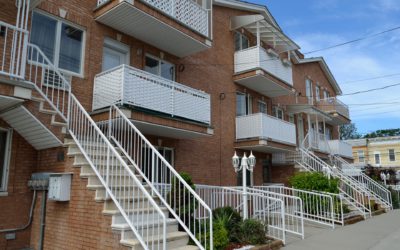
Vacancy. The bane of every landlord and property manager. Every day that your property sits empty means less revenue for you. Here are some tips to help you reduce the amount of time your home or apartment is vacant and get more money from your income property.
Do Your Homework
Before your current tenants prepare to move out you should already have an idea of the current market for rental properties in your area. Chances are if you’ve had a long-term lease in place, you are out of touch with the going rate for similar properties. Keep your eye on local rental listings to see what price neighborhood properties are being advertised for. This will help you set a fair market price for new tenants.One way to predict future pricing trends is to keep an eye on the local vacancy rate. A lower rate means rentals are in higher demand so prices should trend upward. Conversely, if the rates are high there might be a plethora of properties available at any given time, so demand is low and so are prices. To get a report that breaks down a recommended rent price for you, check out Rentability Reports.
Stay in Contact With Your Current Tenants
One sure way to avoid a vacancy is to keep your current tenants and simply renew your lease with them. Of course, to do this, you need to be on good terms with them and they need to be happy where they are. If they are thinking of leaving at the end of their lease, find out why.Maybe money is tight. If that’s the case, consider renegotiating their terms if you can afford to. If you’ve done your homework and your market is trending down, calculate how much you could get from new tenants and subtract out the cost of turning over the property (cleaning, repairs, painting, etc.) and the revenue lost to a vacancy. When you have that final number, you might just find that giving your current tenants a break is a better financial decision.
Speed Up the Turn-Around Time
If your tenants are set on leaving, it’s time to plan out what needs to be done to get the property ready for the next ones. Inspect the property as soon as you know the move-out date. Ask your current tenants what little things might need attention and also inform them of things they might need to take care of in order to get their security deposit back when they leave.Once you have your to-do list and the move-out date, it’s time to determine who’s going to do the work. You might automatically assume you’ll be doing all the work yourself, but sometimes that’s not the the most economical decision. It might be more advantageous to hire professionals to do some or all of the work to get the job done sooner.Professional painters, carpet cleaners and in-depth house cleaners can probably do the work in a fraction of the time it would take you to do it all yourself. This could mean the difference between having your property unavailable in weeks vs. a month or more.
Advertise Early and Often
When you have an idea of the move-out date, it’s time to start advertising the property. If you have significant repairs to do, you might want to hold off until they are mostly, if not completely finished. If your current lease allows, you can even show the property to potential tenants before your current ones move out.This means getting the word out that you’ll have a property available as soon as you can. Tell your friends, tell the neighbors, get it on social media and more. The more people that know the better- you never know where your next tenant will hear about the property and time is of the essence if you want to avoid that dreaded word: vacancy.
Vacancy. The bane of every landlord and property manager. Every day that your property sits empty means less revenue for you. Here are some tips to help you reduce the amount of time your home or apartment is vacant and get more money from your income property.
Do Your Homework
Before your current tenants prepare to move out you should already have an idea of the current market for rental properties in your area. Chances are if you’ve had a long-term lease in place, you are out of touch with the going rate for similar properties. Keep your eye on local rental listings to see what price neighborhood properties are being advertised for. This will help you set a fair market price for new tenants.One way to predict future pricing trends is to keep an eye on the local vacancy rate. A lower rate means rentals are in higher demand so prices should trend upward. Conversely, if the rates are high there might be a plethora of properties available at any given time, so demand is low and so are prices. To get a report that breaks down a recommended rent price for you, check out Rentability Reports.
Stay in Contact With Your Current Tenants
One sure way to avoid a vacancy is to keep your current tenants and simply renew your lease with them. Of course, to do this, you need to be on good terms with them and they need to be happy where they are. If they are thinking of leaving at the end of their lease, find out why.Maybe money is tight. If that’s the case, consider renegotiating their terms if you can afford to. If you’ve done your homework and your market is trending down, calculate how much you could get from new tenants and subtract out the cost of turning over the property (cleaning, repairs, painting, etc.) and the revenue lost to a vacancy. When you have that final number, you might just find that giving your current tenants a break is a better financial decision.
Speed Up the Turn-Around Time
If your tenants are set on leaving, it’s time to plan out what needs to be done to get the property ready for the next ones. Inspect the property as soon as you know the move-out date. Ask your current tenants what little things might need attention and also inform them of things they might need to take care of in order to get their security deposit back when they leave.Once you have your to-do list and the move-out date, it’s time to determine who’s going to do the work. You might automatically assume you’ll be doing all the work yourself, but sometimes that’s not the the most economical decision. It might be more advantageous to hire professionals to do some or all of the work to get the job done sooner.Professional painters, carpet cleaners and in-depth house cleaners can probably do the work in a fraction of the time it would take you to do it all yourself. This could mean the difference between having your property unavailable in weeks vs. a month or more.
Advertise Early and Often
When you have an idea of the move-out date, it’s time to start advertising the property. If you have significant repairs to do, you might want to hold off until they are mostly, if not completely finished. If your current lease allows, you can even show the property to potential tenants before your current ones move out.This means getting the word out that you’ll have a property available as soon as you can. Tell your friends, tell the neighbors, get it on social media and more. The more people that know the better- you never know where your next tenant will hear about the property and time is of the essence if you want to avoid that dreaded word: vacancy.
Originally published on Groundwork





0 Comments